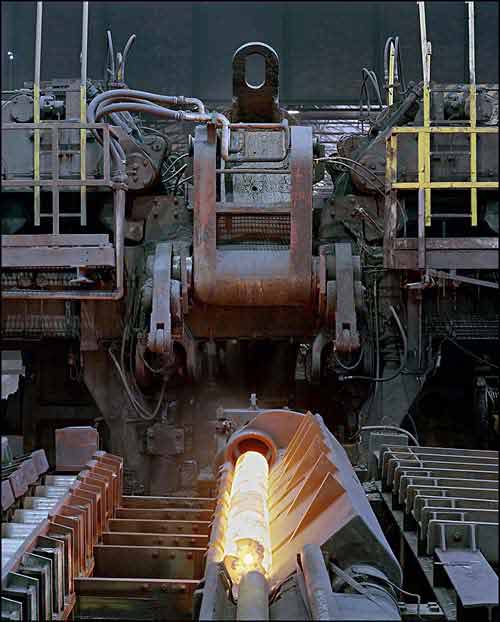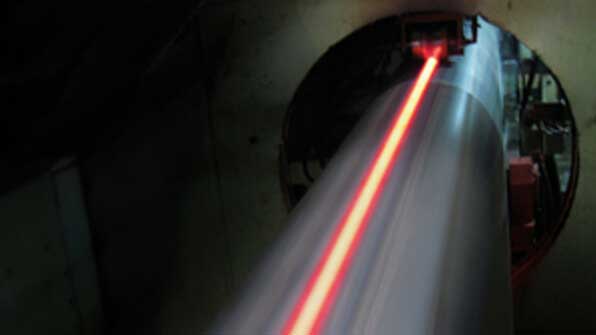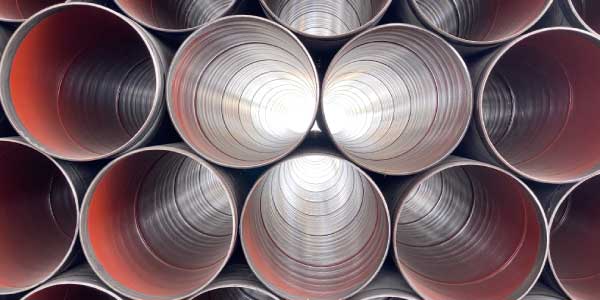OTHER MANUFACTURING PROCESSES
Seamless Pipe Manufacturing Process
Introduction
The advent of rolling mill technology and its development during the first half of the nineteenth century also heralded in the industrial manufacture of tube and pipe. Initially, rolled strips of sheet were formed into a circular cross section by funnel arrangements or rolls, and then butt or lap welded in the same heat (forge welding process).
Toward the end of the century, various processes became available for the manufacture of seamless tube and pipe, with production volumes rapidly increasing over a relatively short period. In spite of the application of other welding processes, the ongoing development and further improvement of the seamless techniques led to welded tube being almost completely pushed out of the market, with the result that seamless tube and pipe dominated until the Second World War.
During the subsequent period, the results of research into welding technology led to an upturn in the fortunes of the welded tube, with burgeoning development work ensuing and wide propagation of numerous tube welding processes. Currently, around two thirds of steel tube production in the world are accounted for by welding processes. Of this figure, however, about one quarter takes the form of so-called large-diameter line pipe in size ranges outside those which are economically viable in seamless tube and pipe manufacturing.
How steel pipes are made
The main seamless tube manufacturing processes came into being toward the end of the nineteenth century. As patent and proprietary rights expired, the various parallel developments initially pursued became less distinct and their individual forming stages were merged into new processes. Today, the state of the art has developed to the point where preference is given to the following modern high-performance processes..
The continuous mandrel rolling process and the push bench process in the size range from approx. 21 to 178 mm outside diameter.
The multi-stand plug mill (MPM) with controlled (constrained) floating mandrel bar and the plug mill process in the size range from approx. 140 to 406 mm outside diameter.
The cross roll piercing and pilger rolling process in the size range from approx. 250 to 660 mm outside diameter.
Mandrel Mill Process
In the Mandrel Mill Process, a solid round (billet) is used. It is heated in a rotary hearth heating furnace and then pierced by a piercer. The pierced billet or hollow shell is rolled by a mandrel mill to reduce the outside diameter and wall thickness which forms a multiple length mother tube. The mother tube is reheated and further reduced to specified dimensions by the stretch reducer. The tube is then cooled, cut, straightened and subjected to finishing and inspection processes befor shipment.

This process is used to make smaller sizes of seamless pipe, typically 1 to 6 inches (25 to 150 mm) diameter. The ingot of steel is heated to 2,370°F (1,300°C) and pierced. A mandrel is inserted into the tube and the assembly is passed through a rolling (mandrel) mill. Unlike the plug mill, the mandrel mill reduces wall thickness continuously with a series of pairs of curved rollers set at 90° angles to each other. After reheating, the pipe is passed through a multi-stand stretch-reducing mill to reduce the diameter to the finished diameter. The pipe is then cut to length before heat treatment, final straightening, inspection, and hydrostatic testing.
 * Note..Processes marked by an asterisk are conducted specification and/or customer requirements
* Note..Processes marked by an asterisk are conducted specification and/or customer requirements
Mannesmann plug mill process
Plug Mill Process, a solid round (billet) is used. It is uniformly heated in the rotary hearth heating furnace and then pierced by a Mannesmann piercer. The pierced billet or hollow shell is rollreduced in outside diameter and wall thickness. The rolled tube simultaneously burnished inside and outside by a reeling machine. The reeled tube is then sized by a sizing mill to the specified dimensions. From this step the tube goes through the straightener. This process completes the hot working of the tube. The tube (referred to as a mother tube) after finishing and inspection, becomes a finished product.

This process is used to make larger sizes of seamless pipe, typically 6 to 16 inches (150 to 400 mm) diameter. An ingot of steel weighing up to two tons is heated to 2,370°F (1,300°C) and pierced. The hole in the hollow shell is enlarged on a rotary elongator, resulting in a short thick-walled tube known as a bloom.
An internal plug approximately the same diameter as the finished diameter of the pipe is then forced through the bloom. The bloom containing the plug is then passed between the rolls of the plug mill. Rotation of the rolls reduces the wall thickness. The tube is rotated through 90° for each pass through the plug mill to ensure roundness. The tube is then passed through a reeling mill and reducing mill to even out the wall thickness and produce the finished dimensions. The tube is then cut to length before heat treatment, final straightening, inspection, and hydrostatic testing.


Steel forging is a metal forming process that uses compressive forces and extreme heat to form metal...

The most popular process for large diameter pipe uses a longitudinal seam weld or Longitudinally Submerged Arc Welded Steel pipes (LSAW)...

Spiral pipe manufacturing has come a long way in recent decades. Cold bending of a spiral pipe was very difficult in the past, but thanks to better manufacturing processes...

